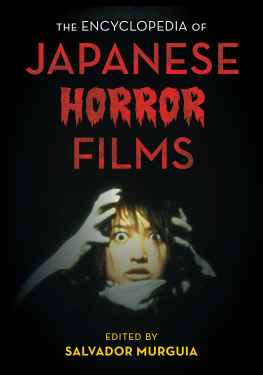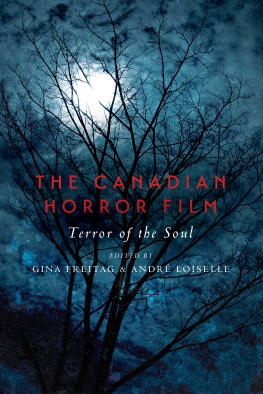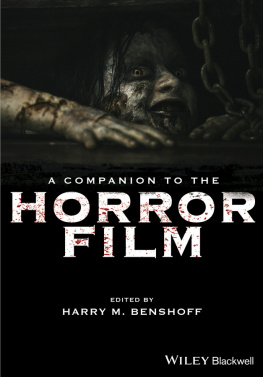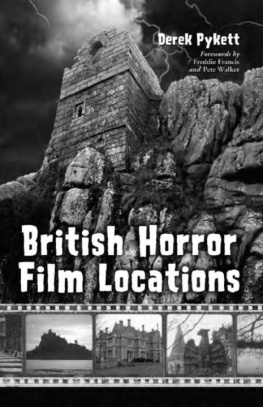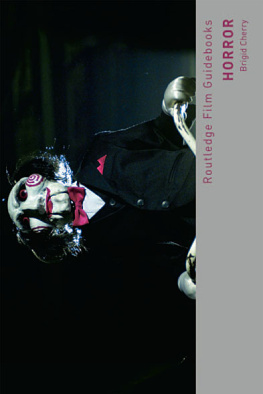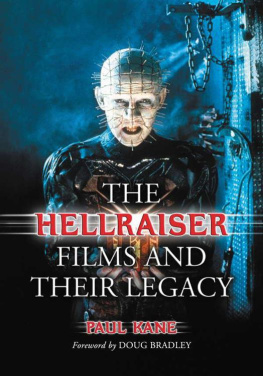Thanks to my friends for inspiration, support and love, both through this book and the difficulties of the last two years. Special thanks to Barbara Kennedy for her sensational lines of flight. To Rob Lapsley and David Deamer in the Deleuze reading group at Manchester Metropolitan University for mental gymnastics. To the English Department at Manchester Metropolitan University and Sue Zlosnik for teaching remission in the final stages. To Edinburgh University Press and the skilled support of Sarah Edwards and Eddie Clark and the copy-editor Lorraine McCann. And finally, thanks to Ranald Warburton for hours of computer assistance, insight into the proper singularities of physics, and for our own machinic connections.
Horror film fandom revels in the genre's special effects, but a corresponding theoretical exploration of horror aesthetics is scarce. The genre has showcased a strongly affective style from its outset. Excessive forms of cinematography, mise-en-scne, editing and sound are the pivotal tools of horror, used to arouse visceral sensations and to horrify the viewer. The psychophysiology of cinematic experience and the ways in which vision and sound directly stimulate the nervous system are still under-researched. We can, however, usefully deploy Gilles Deleuze's philosophical speculations on the affective phenomena of mise-en-scne and movement. Deleuze's work does not focus on the genre of horror per se, but on some popular or sensationalist horror films. This book deals with the relationship of horror film and Deleuzian theory, focusing on the themes of madness and monstrous transformations, discussed via schizoanalysis and becoming, and horror film aesthetics, and also explores the value of Deleuzian work for horror film studies and suggests its future potential.
Keywords: Gilles Deleuze, horror films, aesthetics, horror film studies, madness, monstrous transformations, schizoanalysis, mise-en-scne, psychophysiology, movement
the unbearable itself is inseparable from a revelation or an illumination, as from a third eye.
(Deleuze)
Mike, the soundman of a film crew lost in the woods, admits to kicking their only map into the creek, because it was useless. From this point, they move on, clinging to their own rigid map of reality and to the heavy film equipment which weighs them down. They follow the lines of an invisible, occult map which draws them further off track into a terrifying maze. I take this moment in The Blair Witch Project, directed by Meyrick and Sanchez, as a way in to re-theorising the horror film from the perspectives of Deleuze. The existing theoretical map of horror Film Studies will be pocketed as we find out how far we can travel without it.
At this point, I issue a warning: doing Deleuze leads in turn to being done by Deleuze. For me, theory must have use-value and practical application beyond the academy. Experiencing, articulating and sharing works of fantasy like horror film is not just something I do for a living, but is a vital part of my cultural experience and my being in the world. At first glance, Deleuze's work might appear to be yet another totalising master discourse like the existing paradigms of film theory, but I will be arguing otherwise.
My motivation for this project is twofold. The initial stimulus came from my earlier psychoanalytical readings of horror texts. Although I could graft unconscious schema onto narrative, dialogue andmise-en-scne, I was becoming increasingly conscious of their limitations. Psychoanalysis felt like an inadequate key to unlock either the multiple levels of horror film, or my responses to them. I also started to wonder whether the image of lock and key was not itself inadequate. The films I watched were more complex than a predetermined overlay of symbolic or structural meaning suggested. They seemed to operate elsewhere than the straightforward equations of social stereotypes and political messages that can be found in them. Throwing away the key, I set out to explore this elsewhere.
Horror film fandom revels in the genre's special effects, but a corresponding theoretical exploration of horror aesthetics is scarce and I aim to
I had wanted to interrogate the impact of the horror film experience in my earlier work on the vampire film, but had not yet found the best route. I was gradually led astray from Sigmund Freud and Jacques Lacan by theorists of subjective loss, existential angst and embodied thought. Georges Bataille and Friedrich Nietszche offered me heady alternatives to a psychoanalytic neo-Gothic. In my study of vampire/victim masochism, I became intrigued by Deleuze's work on Nietszche and Sacher-Masoch.
Moved by the radical poetry of Anti-Oedipus and A Thousand Plateaus, I was, by this time, debating the pros and cons of Freud/Lacan contra Deleuze from a defensive position that felt increasingly challenged. My new perspective crystallised via the lucidity of Henri Bergson. As well as offering its own substantial insights, Bergsonism illumined much that was initially opaque for me in Deleuze. Together, they have taken me far from my psychoanalytic guidelines and opened up a broader paradigm shift. As psychoanalytic lack and alienation had formed the wallpaper of my thoughts, solan vital and existential affirmation have come to permeate my wider outlook.
Deleuze's aesthetic philosophy is now part of my ongoing exploration of the filmic experience. Deleuze/Bergsonism opens up new ways of thinking which replace being with becoming. Film, like literature, painting, and philosophy itself, is a distinctively embodied thought process. An understanding of medium-specific operations of lighting, sound, framing and montage enables insight into the nature of movement and time. Rather than mapping pre-existing thought onto film text as allegory, I moved closer to thinking the experience directly in its own terms. With the unashamed zeal of the convert, I want to share this experience with other horror film aficionados as well as a broader range of readers.


